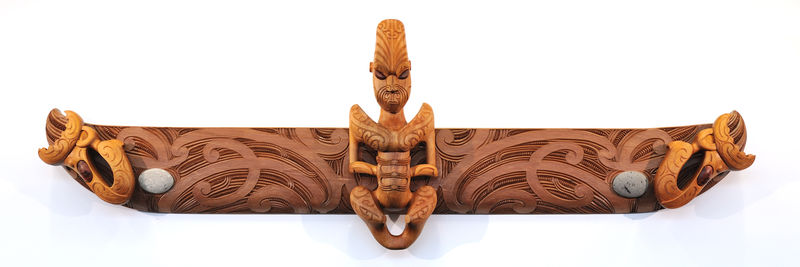
Taking A Fresh Approach to Western Initiation
As many of you know it’s my habit to take a fresh approach to Rosicrucian studies. What not many people know is that these alternative views are highly influenced by my Maori heritage.
Given that I was raised in a Maori setting it was only natural that I should have sought out more natural elements within the western current, and highlight them, even praise them. I was raised by a man who knew how to speak with birds, and they told him many things, who knew how to draw upon plants for medicine, and someone who taught me how to ‘see through’ nature in meditations.
Being only half Maori meant that I also wanted to fulfill my European heritage, and see the best in it. I came across the Golden Dawn and several other influences and some of the teachings were honestly disappointing, or at least I felt something was missing. But when viewing such teachings through Maori eyes, indeed my eyes noticed inklings of similar understandings.
After all the alchemists were not only medical practitioners. They spent so much time with plants, outside, drawing in fresh air, and collecting morning dew waters that it became apparent that many alchemical practices were a continuation of a time when westerners spent more time in nature. The alchemical drawings of crows and the importance of trees and birds in alchemical paintings are a testimony to this. Yet today’s Rosicrucian movement has largely moved away from alchemy, over time becoming more formal and has tied itself to lodge or temple type settings.
As with many of my blog post I call for a return to tradition.
In this case Pansophy became the answer for what a Maori boy was looking for, fully tying an occult Cabala, from the cosmic universe down to the earthly creatures and life forms in a more unified manner. Much of its own language also reflects my own Maori understanding. Though at times, I must admit, I have struggled to explain Maori lore to westerners, and have often given up on the idea.
The Maori language itself is highly esoteric, and comes pre-loaded with meaning. In fact some words I have never been able to explain to anyone outside the Maori culture. Today is another step.
Grass Skirts or High Priest?
The first problem of explaining Maori lore is to remove preconceptions.
Maori were not a race living in savagery, merely caught in the stone-age. Many of its spiritual ideas match some of the highest notions of the Cabala and are very abstract. The Maori would find it insulting to hear our tohunga could be called ‘shamans’ which offer a rather primitive image.
Consider how the Cabala has the ain-soph periods, or negative periods of pre-existence. Maori call this the kore, or ‘not ages.’ Like the Hebrews we also have ten heavens and a tree of life.
This is one version of the Tree of Life.
Ko Maku – The darkness
Te Timu – The water
Te Tiketike – The height
Te Kopua – The depth
Te Kukune – The conception
Te Pupuke – The swelling
Te Hirihiri – The pure energy
Te Paku – The breaking forth
Te Pu – The tap root
Te Weu – The secondaries
Te More – The hair roots
Te Rito – The binding shoot
Te Puhia-Hopu Tu – The powerful shoot
Te Puhia-Hinengaro – The conscious shoot
Te Puhia-Manako – The desire shoot
Te Puhia-Wananga – The intelligence shoot
Te Ahua – The form
Te Hau-ora – The breath of life
Te Atea – The universe
The Supreme Being of the Maori also has over thirty names:
Io-mata-ngaro – Io of the unseen face
Io-roa – Io the eternal one
Io-matua-kore – Io the parentless one, etc.
Many of these divine names relate the actions of the Supreme Being during creation or in coming out of a hidden state in the ‘kore’ ages of negative existence. Generally this being is called Io-matua-kore.
Much of the Maori lore is advanced and yet it was all committed to memory. Some of the more advanced teachings entail the workings of the soul, the attributes of the character to the organs for healing, and very abstract ideas which I won’t attempt to explain here. It would take years.
My Background in the Maori World
Like Many Maori I can trace my family tree going all the way back to the first settlers in New Zealand some 700 years ago. Tamatea Pokai Whenua (Tamatea Wanderer of All the Lands) is my ancestor, who arrived on the Takitimu canoe. With him came Maori priests as well as the rainbow god Kahukura.
My own family has a strong history in tohunga lore, meaning the priestly class of the Maori. This too is a major influence in my thinking. People in NZ recognize my tohunga background, not only through my book ‘Tohunga the Revival’ but more so due to my family history which can easily be proven.
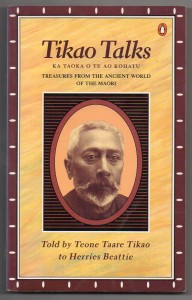 A very well-known tohunga was recorded in the 1920’s, in a book known as Tikao Talks. The narrator was named Teone Taare Tikao, born in the 1850’s. A famous tohunga in the South Island, his father is one of my direct ancestors. Yet Taare Tikao himself had a double wedding with my great-great grandfather, George Robinson, later adopting the Robinsons’ son after he died.
A very well-known tohunga was recorded in the 1920’s, in a book known as Tikao Talks. The narrator was named Teone Taare Tikao, born in the 1850’s. A famous tohunga in the South Island, his father is one of my direct ancestors. Yet Taare Tikao himself had a double wedding with my great-great grandfather, George Robinson, later adopting the Robinsons’ son after he died.
I’ve included a link here, which mentions George Robinson being chief so there is no doubt. His eldest son Tom Robinson (raised by Taare Tikao) was the next chief, and his eldest Francis, my grandfather was the next, whom I spent much time with. My father is the present chief and I am his eldest son.
Needless to say I spent a lot of time learning the ancient lore of both Maori leadership and tohunga lore passed down from Teone Taare Tikao. Thus after the death of George Robinson, this famous tohunga raised by great grandfather, giving this lore to me as it came down in generations.
Maori Esoteric School of Learning
Another misconception we need to remove is how this ‘shamanism’ was taught. As a matter of fact tohunga lore was passed down in seven entries, in what today’s world would call a university.
In the South Island the largest of these learning centers, or whare wananga, was held at Kaiapoi, with many scholars coming from several esteemed lineages of learning. Taare Tikao was the last to learn from the two remaining members of this school. I say ‘scholar’ here because tohunga does not only mean ‘wizard and sage’ as it also means ‘export and scholar’ denoting a higher tribal lore.
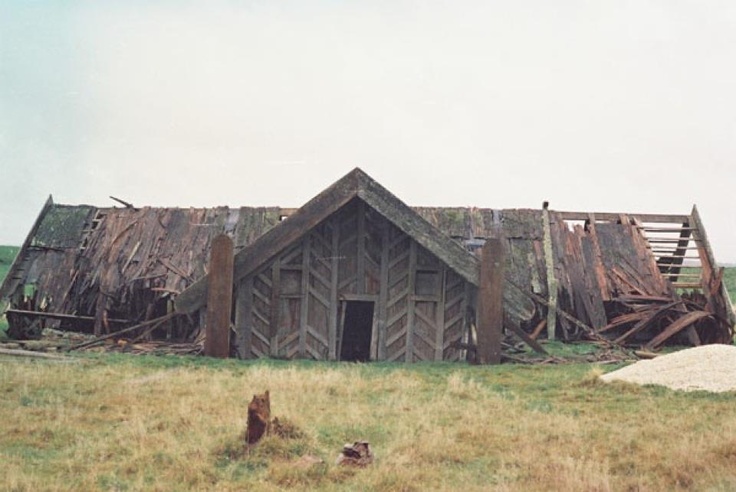
The lore was committed to strict memorization. During class other scholars supported the recalling of the details, and yet any deviation from the ancient lore was considered a crime. In fact in my tribal history one tohunga was put to death and cooked for teaching false histories.
The first subject of learning was tribal histories, including genealogy, important events and wars. This was followed by learning off by heart esoteric historical chants that contain not only ‘spells’ but are also a kind of history unto themselves. I learnt several of these as a boy, the first one relating the origins of life, detailing all the kinds of water, rains, winds, until the rising of the land out of the sea.
In the seven grades the lore was divided between healing, witchcraft, star lore, the gods etc. The highest grade was that of teaching the lore of Io-matua-kore, the highest supreme being of the Maori. This being was an unknowable and invisible deity, whose name could not be uttered.
A Very Different Approach
Although the doctrine looks similar to Cabala and the school of learning was quite formal, with very strict rules, there are some real differences between the Maori and European approaches.
Firstly tohunga are a kind of saint. That’s right, a saint. Consider that for a moment.
The lore is not only something we learn. The lore in itself is sacred. During instruction, and in listening to the recitations of the lore something happens. Most experience a kind of impregnation, and the words of the chants enter into your bones as you sit there in the dark receiving the transmission.
I too experienced something similar during instruction. While there were lesser classes of tohunga, who alone depended upon magical formula and summoning powers, a true tohunga, being a tohunga of the seventh class was a miracle man, a wonder worker and blessed by the highest as a kind of saint.
His powers came as a result of being saintly. Most tohunga are the first ones seen gathering food for the elderly, or teaching children their culture so it is not lost, encouraging the weaker children or working steadfastly on environmental projects. In short the tohunga of the highest level receives the power to work miracles as a result of his selfless service. A tohunga loves life and people and is blessed.
I knew a man recently who had claimed to be a tohunga, and wanted the stature of having such powers. We immediately recognize when someone is not a tohunga, as they are too bold and proud. His own tribal people said to my friend Phil that this particular person needs to come home onto his tribal land and peel some potatoes, which in itself expresses much meaning in Maori mentality.
Thus there are several classes of tohunga, such as spell crafters, which would equate with something like the Golden Dawn, depending on formula and methods, invocations etc. and ranging to the highest class of tohunga, who is not only a wonder worker but is also a prophet.
Our teacher Tikao said: “Good ways of proving that a pupil was an adept was for him to say a karakia (incantation) that would make the side of a hill fall, or shift, or slip; or that would turn the course of a river or cut away a bank.” I mention this only in relation to varying degrees of power.
At first tohunga of the lower class have magical test. As they progress and enter into the higher class then miracles start to follow them, as well as special signs from nature, indicating that a tohunga has gone beyond the normal means of magical operation. Now he is a wonder worker.
A History of Wonder Workers
The reason I go into this aspect of tohunga work is that it also struck me how the western paths had more theory than actual reality checks. Tohunga are part of the community, rather than operating behind closed doors as my western friends do. Thus a divide arose, which needed mending.

I mean some tohunga were very well known for their deeds.
Tuakana Aporotanga born in 1852 is a great example In 1900 some 16 children and two adults had drowned while crossing the Motu River by canoe. The anguished parents sought help to find the missing bodies. At the riverside Tuakana conducted his rituals. Rainbows appeared from the sea and the very spot where they touched the land the bodies were found, allowing the people to lay their dead to rest.
I’ve actually been fortunate to have seen such an event myself. Brian Ray from Cairns was there as a witness who saw a tohunga call two rainbow gods at once, at that very moment two rainbows appeared in the sky, one atop the other to confirm the ceremony which was an altar consecration.
In Maori lore the rainbow is not only a god, it is a signal of approval from Io-matua-kore.
Even in my own lifetime my own grandfather successfully lifted a man out of a coma using a chant.
Naturally reading signs in nature, communicating with kaitiaki (animals that carry a guardian soul on earth), and having birds carry the signs and messages across great distances are traditional.
As I said this is also where I became disappointed with the western approach.
Removing the Fantasy from the West
On approaching western spirituality I found the Golden Dawn interesting, but most of the magic was ‘use your imagination’ and ‘imagine the god present’ or worse ‘feel that the god is there.’
It just sounded too much like make believe. After all in my Maori up bringing the gods signal through not only nature but also through the unconscious actions of the people. Special circumstances resemble their voice. An example if when two chiefs argue. One will get sick to signal the other is right.
Here were some of the traditional test for a tohunga in training:
- Breaking stones.
- Clearing snow from the side of a mountain.
- Making a divine symbol appear in the sky.
- Withering a tree.
- Regenerating the tree back to life.
- Causing a bird to freeze on the spot (to bind it as a guardian)
- Calling dolphins and whales for navigation.
- Calming the sea before voyage.
- Healing the sick and taking away depression.
- Making a log float upstream on a river.
- Making a chosen number of birds land on a fence.
- Causing two rainbows to appear.
- Prophecy and correctly foretelling future outcomes.
In contrast I didn’t like picking up a book by Golden Dawn ‘Adepts’ that instructed you to ‘see the god in your minds’ eye.’ Anyone can imagine anything and it wasn’t validated all the way through in nature.
Finding Validation of Initiation in the West
Fortunately the more I dug the more answers came. The Elu Cohens for example have a series of signs that manifest during invocations known as ‘passes’ which indicate spiritual progression.
I should emphasize that they are not manifested for the sake of miracle seeing, but rather they appear to those who are gifted and advancing in their soul.
What most people miss I believe is this progression we have in the Maori world, from traditional spiritual formula of invocations towards the higher end of wonder working. The answer was that everything our tohunga were doing can easily be found in studying the saints.
Maori tell of a guardian dog that warns of death and danger. Saint John Bosco was protected by such a giant dog that appeared at moments of danger, only to disappear for years at a time. It never wanted food and played with children, and as with Maori legend most adults never actually saw it.
Saint Joseph of Cupertino could actually speak with all manner of birds and animals, even reproaching a wild hawk when it had killed his finch. Other saints had messenger birds that preceded them.
A woman of my tribe had slept with a god, and as he left at night light shone from under his feet. When she asked who it was he replied that he was Uenuku the rainbow god. Similarly Boehme and several mystics of his tradition attest they have had personal experiences and manifestations of Sophia.
I too am one of those who has seen Sophia which brought me to Boehme looking for answers.
Pansophy as a Holistic Western Tradition
Although I was doubtful in my encounter with the western paths I came to the conclusion that the Rosicrucian tradition has much fruit to offer. I am not talking about the stand alone tradition that confines us to operate within ‘lodges’ but rather the broader Rosicrucian path of Pansophy.
Remember, Pansophy is the Hermetic twin of Boehme’s Theosophy. The early Rosicrucian path was idealized in the image of a cloister setting. Monks in cloisters, brewing herbal medicines in prayer shows a path not unlike the tohunga path, in that both take part in community and bring comfort to many.
I still believe there is a gap in the transition from magical formula (mystical exercises such as those taught by Amorc, or the G.D) and the path that leads towards the higher end of the spectrum which concludes in actual sainthood. Thus it is my Maori thinking that broadens the path, and tries to get Rosicrucian practices ‘out of the lodge’ of its cloak and dagger environment and back into nature.
Pansophy is like the Cabala in that it follows the Reintegration legend, and creates a correspondence between cosmos and all life. But as the Rosicrucians and Boehme tells us, we must penetrate deeply into the Book of Nature, and read its signature. It is this approach which takes us in a vastly different direction than say the Golden Dawn which has us dressed in Egyptian gear in temples.
Several Pansophist, especially members of the Hartlib Circle, actually designed initiatory gardens, which are scattered across France and Germany, often leading to a Temple of Wisdom. If anyone was to say that my Rosicrucian path grafted ideas from the Maori side then this would be incorrect.
All in all we find that the west has such pathways to realize sainthood, but perhaps a few elements are forgotten. It is only that with Maori eyes I’ve been able to appreciate some aspects others might ignore. The results will leave us with a broadened Rosicrucian path, one that is rooted in nature, and also leads, I hope, to a path of miracles and wonder that will ultimately create Adepts who can help others.
That is the ultimate test of value on any tohunga. What are they really doing for the people?
Now I leave it to you to apply this question to the western path and see what follows…
Over you, Samuel Robinson.

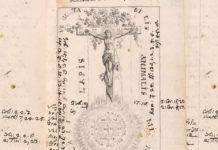
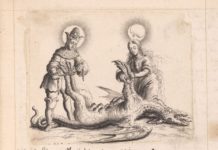
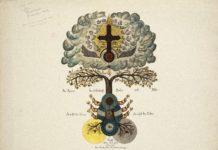







This was absolutely fascinating! Thank you so very much for sharing it with everyone!